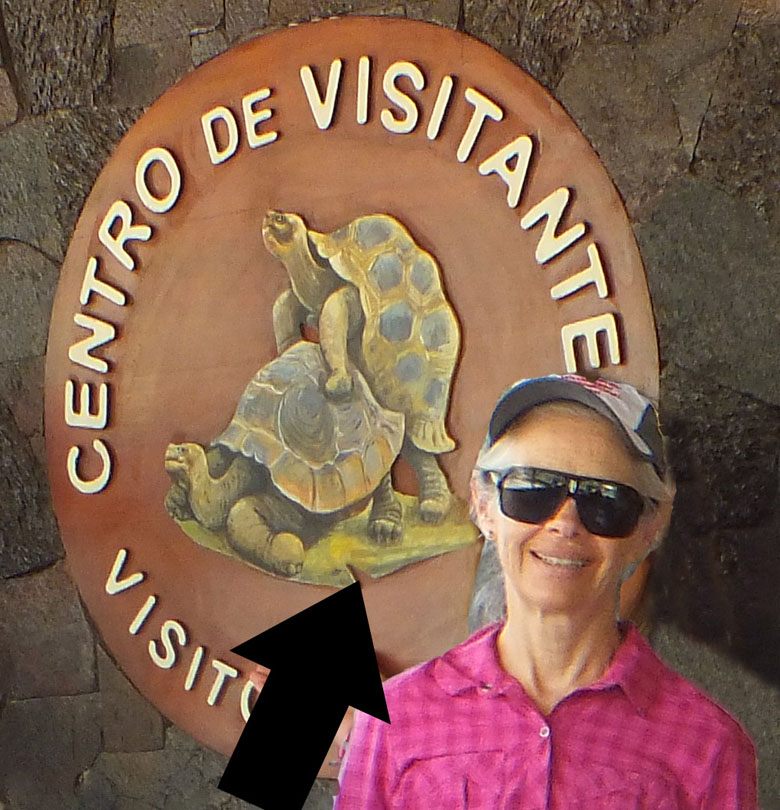Thinking about Impact
 Would you read ConservationVIP’s impact report if I told you that it uses the word “sex” multiple times? I know that sex is often used to market travel destinations, clothes, cars . . . so, I’ve been thinking about how we could use sex as an attention grabber, to get people to read about our impact. There are opportunities on our volunteer trips to see nature doing what comes naturally, so if we worked really hard at it, there might be a way to pull it off.
Would you read ConservationVIP’s impact report if I told you that it uses the word “sex” multiple times? I know that sex is often used to market travel destinations, clothes, cars . . . so, I’ve been thinking about how we could use sex as an attention grabber, to get people to read about our impact. There are opportunities on our volunteer trips to see nature doing what comes naturally, so if we worked really hard at it, there might be a way to pull it off.
But honestly, I have not found a credible way to use sex in the report and retain our reputation as a responsible environmental nonprofit. So, why did I ask the absurd question? To get attention of course. Our projects help to sustain some of the world’s greatest landscapes, cultural heritage sites and biodiversity. But in a world full of nonprofits clamoring for attention for their organizations’ work, it is hard to get attention. When so many tour operators claim to be sustainable, our genuine commitment can get lost in the hype. That means that, like many other nonprofits around the country, at this time of year we update our “impact summary” and try to coax people to read it.
 In addition to worrying about obscurity, I am also dealing with the fear factor. What if people read about our impact but they are not impressed? How can we summarize our impact in a way that will convince people that we are “worthy”? One reliable way to impress people is to use a startling photo showing an extraordinary accomplishment. One of my favorites in this department would be a photo of one of the bridges we helped build in Torres del Paine. If people aren’t impressed by a hanging bridge high in the air over a deep gorge, overlooking a massive glacier, then they are just not in our demographic!
In addition to worrying about obscurity, I am also dealing with the fear factor. What if people read about our impact but they are not impressed? How can we summarize our impact in a way that will convince people that we are “worthy”? One reliable way to impress people is to use a startling photo showing an extraordinary accomplishment. One of my favorites in this department would be a photo of one of the bridges we helped build in Torres del Paine. If people aren’t impressed by a hanging bridge high in the air over a deep gorge, overlooking a massive glacier, then they are just not in our demographic!
 Or, how about a photo of an animal? Many environmental nonprofits show animal photos as a shortcut way to tug at the heartstrings. I confess that I swoon a bit when I look at this photo of a cute red squirrel who may be helped by the volunteers on our Scottish Highlands Trip, where our volunteers plant trees to support rewilding. Or, we could show some of the really cool photos of sea turtles taken by our volunteers who are working to protect the turtles in the Galapagos Islands.
Or, how about a photo of an animal? Many environmental nonprofits show animal photos as a shortcut way to tug at the heartstrings. I confess that I swoon a bit when I look at this photo of a cute red squirrel who may be helped by the volunteers on our Scottish Highlands Trip, where our volunteers plant trees to support rewilding. Or, we could show some of the really cool photos of sea turtles taken by our volunteers who are working to protect the turtles in the Galapagos Islands.
But my concern is, we achieve much of our impact through maintenance projects. I am proud of all the maintenance work we do. Yes, I said maintenance. And yes, I do know that maintenance is the Rodney Dangerfield of environmental projects.
ConservationVIP® volunteers do a lot of trail maintenance, but photos of trail maintenance are just not that impressive. When the work is done right (that’s us!), the work is not particularly noticeable. If we show you a picture of a well-maintained trail, your eyes will wander to the gorgeous mountains in the background because focusing on the trail is not as uplifting. It is easy to overlook the impact of trail maintenance until you walk on a trail that is channeling water along it as if it were a stream bed. That is when hikers begin walking off-trail, trampling sensitive habitat, and people wonder why the parks don’t do upkeep necessary to prevent the damage. (Easy answer: lack of resources.)
Similarly, if you look at a photo of Inca ruins which our volunteers helped to clean, of course you will focus on the amazing stone work. You may become lost in wondering how long it took the Incas to build the wall or wonder how they became so skilled. You will probably not start thinking about how the stones need to be cleaned of vegetation regularly so that this marvelous display does not become hidden again under layers of vegetation.
I could go on at length about the impact of the many “behind the scenes” maintenance tasks our volunteers generously perform, so that other visitors, now and in the future, can enjoy the destinations we serve. But, you probably don’t want to spend any more time reading about maintenance. If you’re like me, at this point you’re thinking about your own personal list of maintenance projects that needs tending. But do me a favor, if you have one more minute. Take a look at our “impact summary“. It’s amazing how the individual efforts add up. I raise a toast to Volunteers! They are Very Important People.
Chris Braunlich


